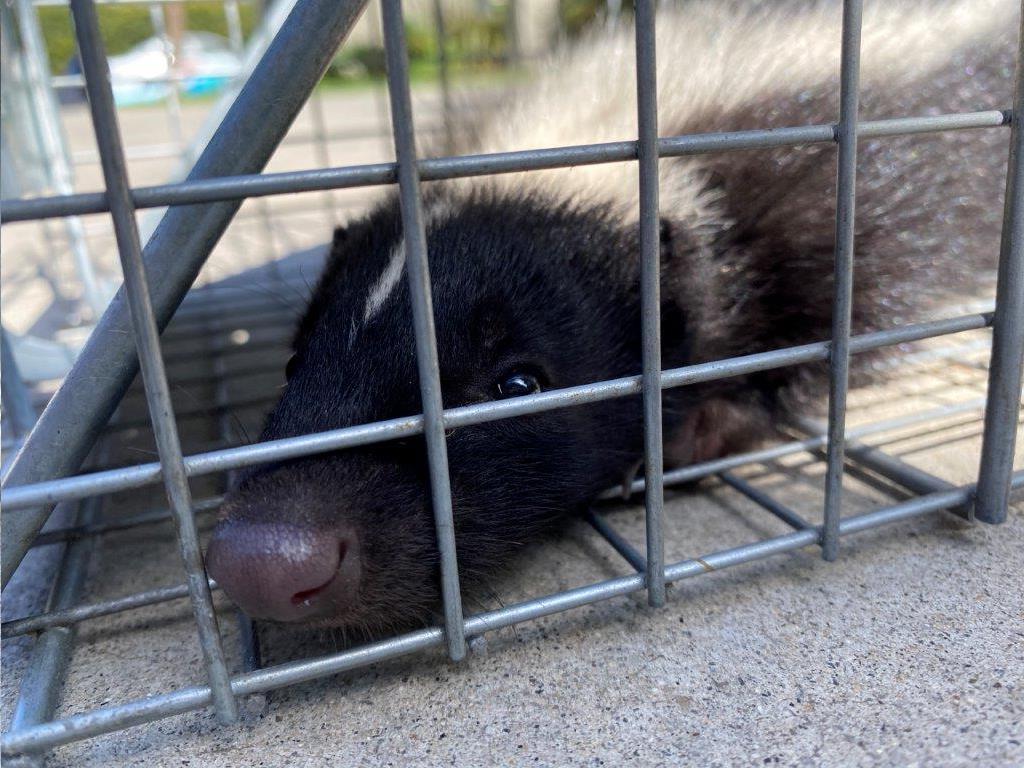
The skunk is one of the most easily identifiable animals around the globe. Although they are easily identifiable, they are greatly misunderstood. There are twelve species of skunks in the world, but you are most likely to encounter four of these furry mammals. The striped skunk, hooded skunk, spotted skunk, and the hog-nosed skunk are the four species you are most likely to see wandering around your property.
In the wild, the average lifespan of a skunk is six years. However, in captivity, skunks can live up to 10 years. They are nocturnal omnivores, feeding on fruits, plants, berries, insects, and larvae.
Skunks have sharp teeth, and they use their long claws for digging. Although skunks have terrible vision, being nearsighted, their sense of hearing and smell is remarkable.
You might not know this, but the spotted and striped skunks are good at climbing. The striped skunk is able to climb up boards, wire mesh, and fences, but they do not climb trees often. The spotted skunk, on the other hand, is an adept tree climber. In fact, they are so skilled at climbing that they are able to climb down a tree headfirst.
If, as a property owner, you think that installing a fence is enough to keep a skunk out, then you need to think again. Whether you install a chain-link fence or a wooden fence, if a skunk wants to get in, they can either scale the fence or go underneath.
How Can You Modify Your Fence?
If you have already installed a fence, but you find skunks climbing over it to gain access to your property, there are steps you can take to modify your fence. These steps will ensure that you keep all skunks as well as other wildlife animals out of your property.
· Narrow the Pickets
Skunks are able to pass through cracks and crevices. A fence with an open picket would not do much in keeping them out of your property. They do not even need to climb over the fence to gain access to your yard; they can just squeeze through the gaps.
If you are keen on installing the open picket style fence, you can cover it with nearly invisible wire mesh. This will keep any skunk from squeezing its way through.
· Opt for a Metal Fence
Skunks have sharp claws and teeth that they can use to rip wood apart. You can switch to a metal fence since they would not be able to tear it apart.
· Eliminate Any Digging
Skunks tend to do a lot of digging in their quest to find food and shelter. They do not dig deep holes, but sometimes, all it takes is a shallow depression for them to shimmy underneath your fence. To eliminate all forms of digging under your fence, bury wire mesh several feet into the ground. That way, no matter how deep they dig, they will not be able to go under your fence.
For a sturdier modification, you can add concrete before installing the fence. Even with their sharp claws, they still cannot dig through solid concrete.
· Secure the Gate
The only other way for them to gain access to your property is through the gate. Even after all the modifications, the gate remains the weakest link because it is not fixed permanently. Install a gate that only swings in one direction and covers any gap by securing a board on the sides. You can also add concrete to the base of the gate and extend the length so that it almost touches the ground. This keeps skunks and other wildlife animals from crawling under.
Go back to the Texas City wildlife removal home page.